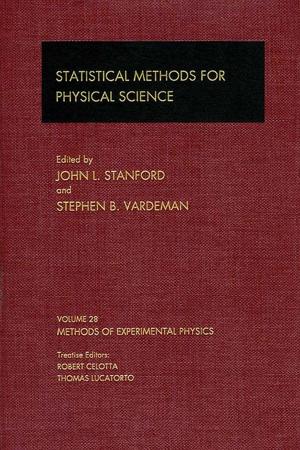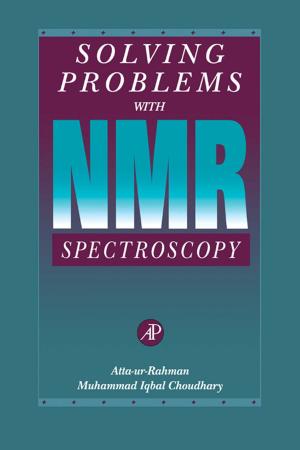| Author: | John F. Shroder | ISBN: | 9780080885223 |
| Publisher: | Elsevier Science | Publication: | February 27, 2013 |
| Imprint: | Academic Press | Language: | English |
| Author: | John F. Shroder |
| ISBN: | 9780080885223 |
| Publisher: | Elsevier Science |
| Publication: | February 27, 2013 |
| Imprint: | Academic Press |
| Language: | English |
The changing focus and approach of geomorphic research suggests that the time is opportune for a summary of the state of discipline.
The number of peer-reviewed papers published in geomorphic journals has grown steadily for more than two decades and, more importantly, the diversity of authors with respect to geographic location and disciplinary background (geography, geology, ecology, civil engineering, computer science, geographic information science, and others) has expanded dramatically. As more good minds are drawn to geomorphology, and the breadth of the peer-reviewed literature grows, an effective summary of contemporary geomorphic knowledge becomes increasingly difficult.
The fourteen volumes of this Treatise on Geomorphology will provide an important reference for users from undergraduate students looking for term paper topics, to graduate students starting a literature review for their thesis work, and professionals seeking a concise summary of a particular topic. Information on the historical development of diverse topics within geomorphology provides context for ongoing research; discussion of research strategies, equipment, and field methods, laboratory experiments, and numerical simulations reflect the multiple approaches to understanding Earth’s surfaces; and summaries of outstanding research questions highlight future challenges and suggest productive new avenues for research. Our future ability to adapt to geomorphic changes in the critical zone very much hinges upon how well landform scientists comprehend the dynamics of Earth’s diverse surfaces. This Treatise on Geomorphology provides a useful synthesis of the state of the discipline, as well as highlighting productive research directions, that Educators and students/researchers will find useful.
- Geomorphology has advanced greatly in the last 10 years to become a very interdisciplinary field. Undergraduate students looking for term paper topics, to graduate students starting a literature review for their thesis work, and professionals seeking a concise summary of a particular topic will find the answers they need in this broad reference work which has been designed and written to accommodate their diverse backgrounds and levels of understanding
- Editor-in-Chief, Prof. J. F. Shroder of the University of Nebraska at Omaha, is past president of the QG&G section of the Geological Society of America and present Trustee of the GSA Foundation, while being well respected in the geomorphology research community and having won numerous awards in the field. A host of noted international geomorphologists have contributed state-of-the-art chapters to the work. Readers can be guaranteed that every chapter in this extensive work has been critically reviewed for consistency and accuracy by the World expert Volume Editors and by the Editor-in-Chief himself
- No other reference work exists in the area of Geomorphology that offers the breadth and depth of information contained in this 14-volume masterpiece. From the foundations and history of geomorphology through to geomorphological innovations and computer modelling, and the past and future states of landform science, no "stone" has been left unturned!
The changing focus and approach of geomorphic research suggests that the time is opportune for a summary of the state of discipline.
The number of peer-reviewed papers published in geomorphic journals has grown steadily for more than two decades and, more importantly, the diversity of authors with respect to geographic location and disciplinary background (geography, geology, ecology, civil engineering, computer science, geographic information science, and others) has expanded dramatically. As more good minds are drawn to geomorphology, and the breadth of the peer-reviewed literature grows, an effective summary of contemporary geomorphic knowledge becomes increasingly difficult.
The fourteen volumes of this Treatise on Geomorphology will provide an important reference for users from undergraduate students looking for term paper topics, to graduate students starting a literature review for their thesis work, and professionals seeking a concise summary of a particular topic. Information on the historical development of diverse topics within geomorphology provides context for ongoing research; discussion of research strategies, equipment, and field methods, laboratory experiments, and numerical simulations reflect the multiple approaches to understanding Earth’s surfaces; and summaries of outstanding research questions highlight future challenges and suggest productive new avenues for research. Our future ability to adapt to geomorphic changes in the critical zone very much hinges upon how well landform scientists comprehend the dynamics of Earth’s diverse surfaces. This Treatise on Geomorphology provides a useful synthesis of the state of the discipline, as well as highlighting productive research directions, that Educators and students/researchers will find useful.
- Geomorphology has advanced greatly in the last 10 years to become a very interdisciplinary field. Undergraduate students looking for term paper topics, to graduate students starting a literature review for their thesis work, and professionals seeking a concise summary of a particular topic will find the answers they need in this broad reference work which has been designed and written to accommodate their diverse backgrounds and levels of understanding
- Editor-in-Chief, Prof. J. F. Shroder of the University of Nebraska at Omaha, is past president of the QG&G section of the Geological Society of America and present Trustee of the GSA Foundation, while being well respected in the geomorphology research community and having won numerous awards in the field. A host of noted international geomorphologists have contributed state-of-the-art chapters to the work. Readers can be guaranteed that every chapter in this extensive work has been critically reviewed for consistency and accuracy by the World expert Volume Editors and by the Editor-in-Chief himself
- No other reference work exists in the area of Geomorphology that offers the breadth and depth of information contained in this 14-volume masterpiece. From the foundations and history of geomorphology through to geomorphological innovations and computer modelling, and the past and future states of landform science, no "stone" has been left unturned!















